The Androgyny Deception
Part 3
“The American Costume”
We have been uncovering Satan’s plot to bring the
androgynous mindset into our church. Now we will
consider an important aspect of his scheme, showing
how he got his foot in the door, so to speak.
Remember the quotation about the “so called dress
reform”? What was that all about? Let’s pray for open
hearts to hear the voice of Jesus in the following
message.
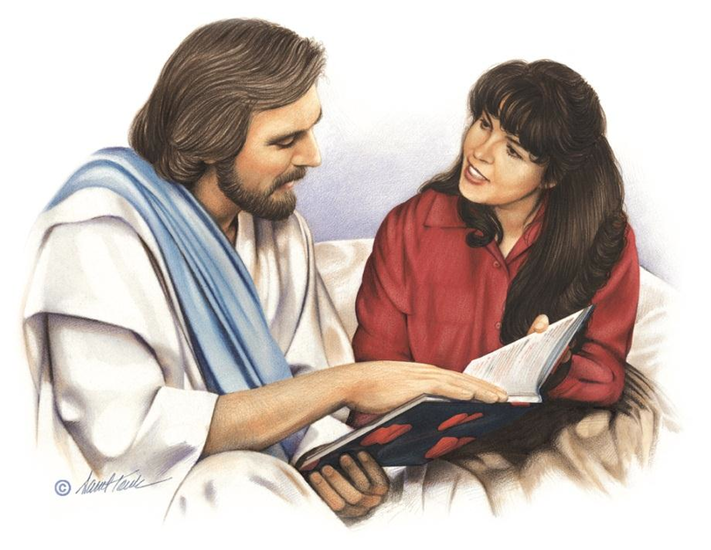
Is it important for us, as God’s people, to understand
the development of worldly fashion, and see how the
adversary has, subtly and slowly, crept his customs and
practices into the church?

EGW: “As we see the love of fashion and display
among those who profess to believe present
truth, we sadly ask, Will the people of God
learn nothing from the history of the past?
There are few who understand their own
hearts.” {MYP 354.3}
Now we will consider the history of women’s
dress, and see how fashions have developed.
Going back to a time when Ellen White was still
alive, we will take a look at the prevailing
fashions of her day.
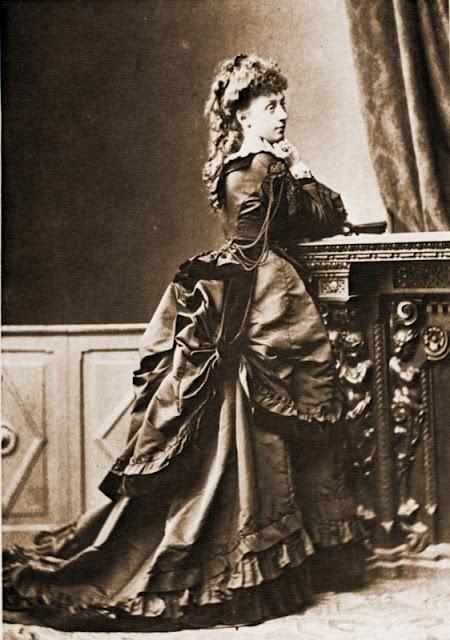
The 1850’s female dresses included hoops, and
skirts dragging in the filth. Heavy underskirts
and corsets were extremely unhealthful.
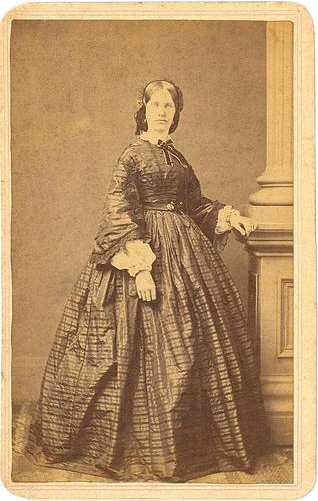
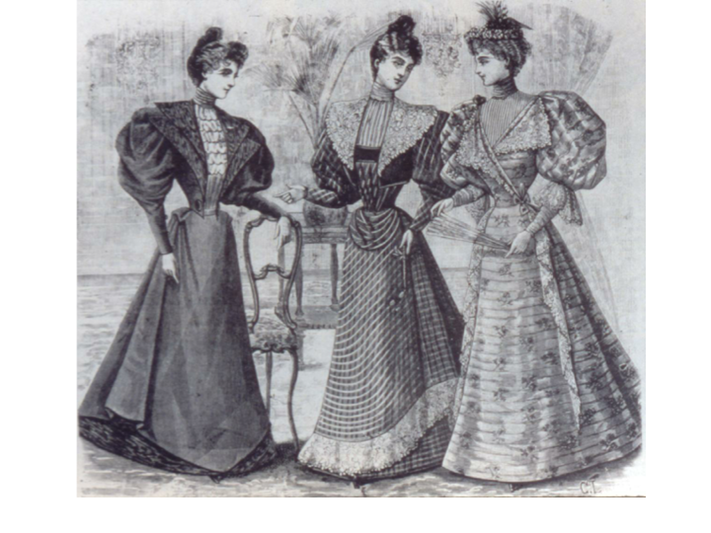
Corsets compressed the waist, causing major health problems.
Hoop Skirts of the 1850’s and 1860’s
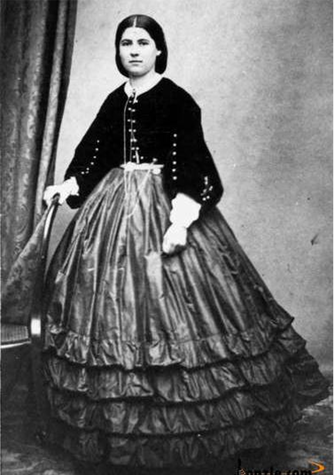
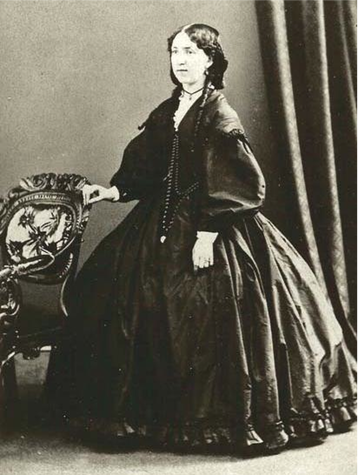
EGW: “From what has been shown me, hoops
are an abomination. They are indecent, and
God's people err if they follow, in the least
degree, or give countenance to, this fashion.”
{4bSG 66.1}
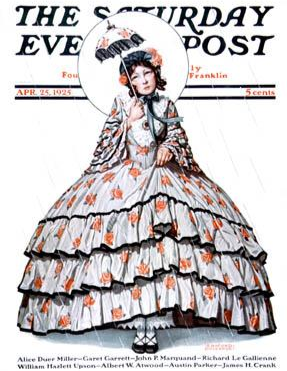
The hoops (caged crinolines) were extolled as
freeing women from the many layers of heavy
petticoats that dragged down on the female
waistline. Women who didn’t wear hoops wore
as many as six underskirts!
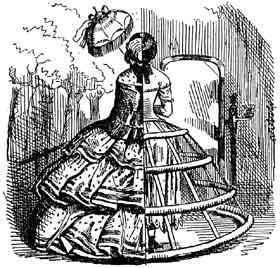
EGW: “While traveling in the cars and stages... I have
seen large companies crowding into the cars, and in
order to make any headway, the hoops had to be raised
and placed into a shape which was indecent.”{4bSG 68.1}
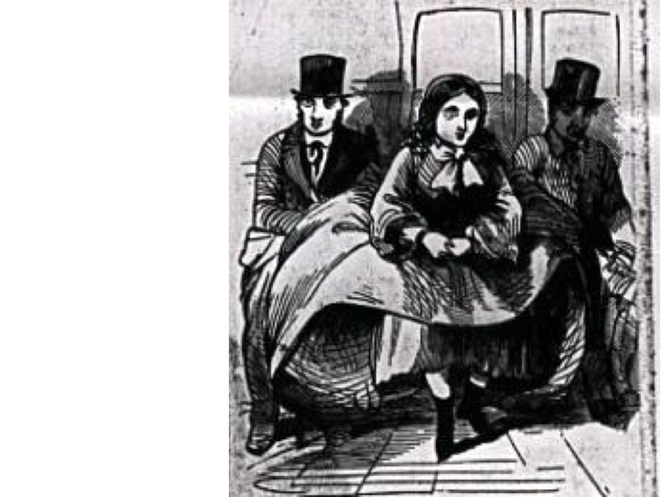
EGW: “And the exposure of the form was ten-fold more
with those who wore hoops, than with those who did
not...but modesty and decency must be sacrificed to the
god of fashion. May the Lord deliver his people from
this grievous sin. God will not pity those who will be
slaves to fashion.” {4bSG 68.1}
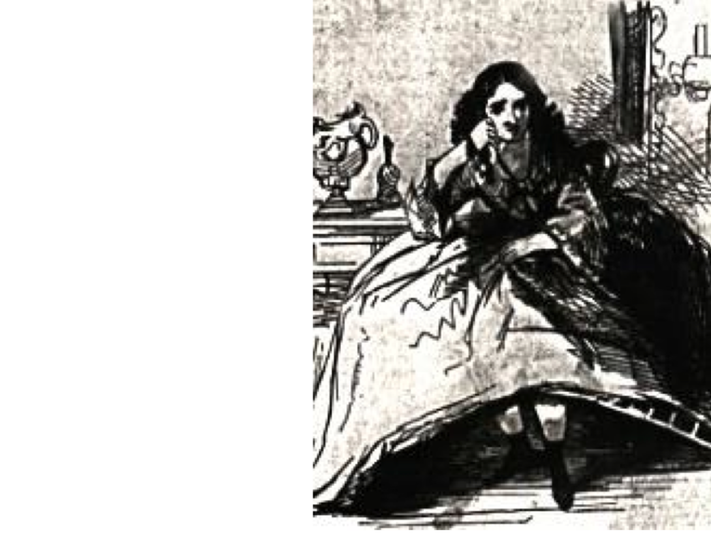
Who is behind the god of fashion?
EGW: “In forming the fashions of the day, he
(Satan) has a fixed purpose.” {3SM 244.3}
Satan has an agenda!
Let us not be ignorant of his devices.
EGW: “ It is our privilege, our duty, to receive
light from heaven, that we may perceive the
wiles of Satan, and obtain strength to resist his
power.”{RH, October 23, 1888 par. 10}

Satan specializes in mixing truth with error,
good with bad, even in worldly fashions.
He creates a wrong fashion, and then leads
ungodly people to “correct” the wrong with
something that is also wrong.


How important it is, then, that we learn God’s
principles, and submit to His will, so that we
may not be deceived by the devil!
God ordained that the husband be the head of
the home.
“The head of the woman is the man.”
1 Corinthians 11:3
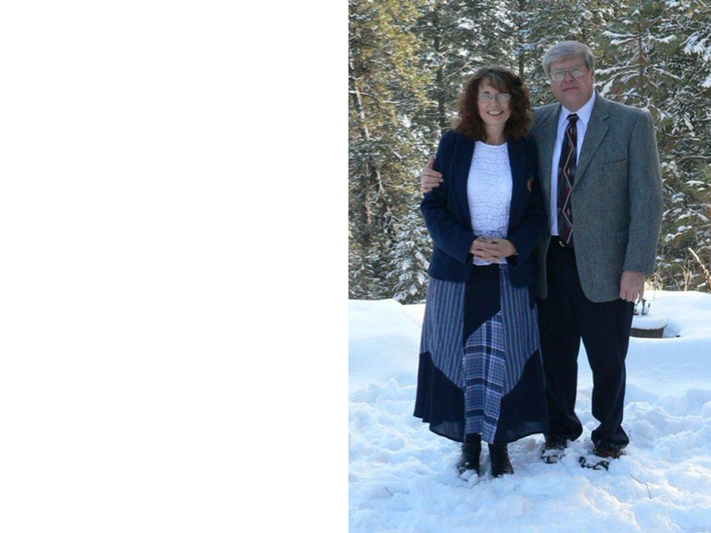
EGW “The husband and father is the
head of the household.” {AH 211.4}
EGW “The father represents the divine
Lawgiver in his family.” {AH 212.2}
The truth about God’s creation order—the
headship of man—has been HATED by many
rebellious women for a long time!

The devil launched a massive attack against
God’s order of creation in the 1850’s, when he
inspired a group of “modern, restless Eves” to
rebel against God’s principles. These women
defied the Bible. They were spiritualists.
They decided that wearing men’s clothing
would give them power and authority. They
coveted the role God had given men.
In the 1850's, Elizabeth Smith Miller put on a
"short" skirt over pantaloons.
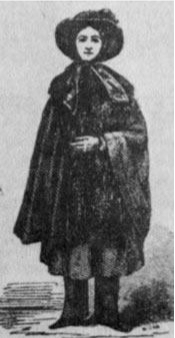
Her cousin, Elizabeth Cady Stanton, and her friend Amelia Bloomer, also wore similar attire.
Part of their motivation was noble—to wear more healthful attire.
This particular style, designed by Amelia Bloomer, consisted of pants under a short dress.
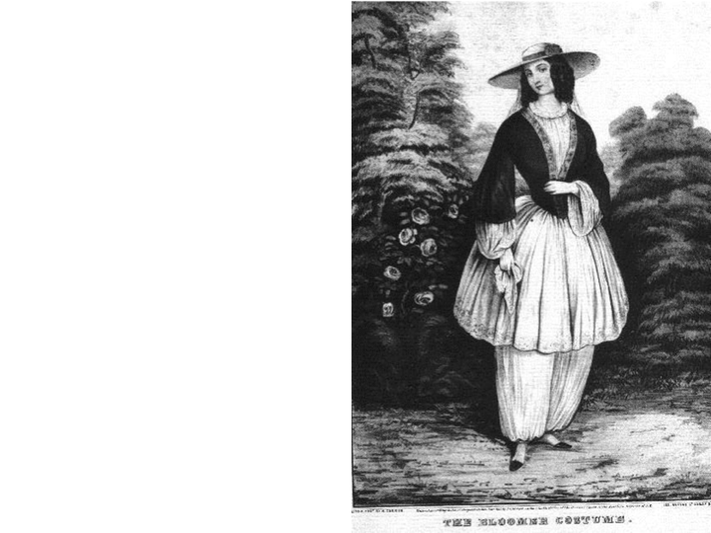
There were various styles.
This knee-length dress over pants outfit was
called the “American Costume.”
The “American Costume” was worn by women
who rebelled against the Bible principle that
“the head of the woman is the man.”
1 Corinthians 11:3
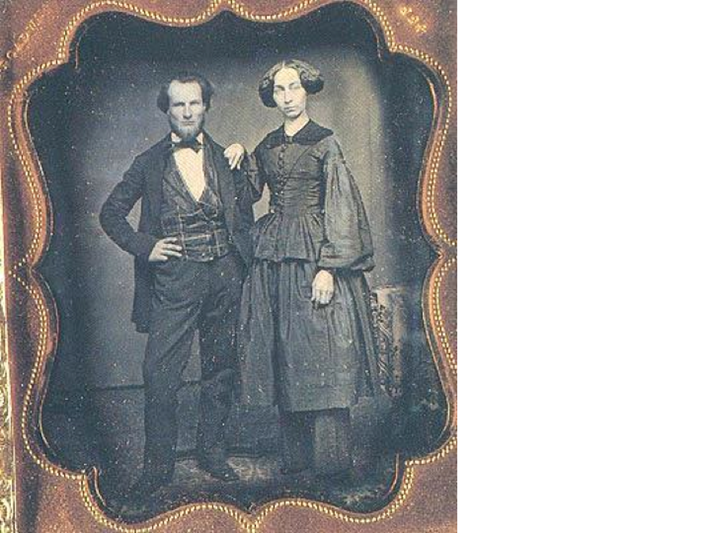
These rebellious woman were spiritualists.
“Spiritualists believed individuals could serve
as vehicles of truth because each embodied the
laws of nature in his or her being. Such
individualism laid the foundation for
Spiritualism's rejection of male headship over
women.”
—From “Radical Spirits: Spiritualism And Women's Rights In Nineteenth-Century America” written by Ann Brauden
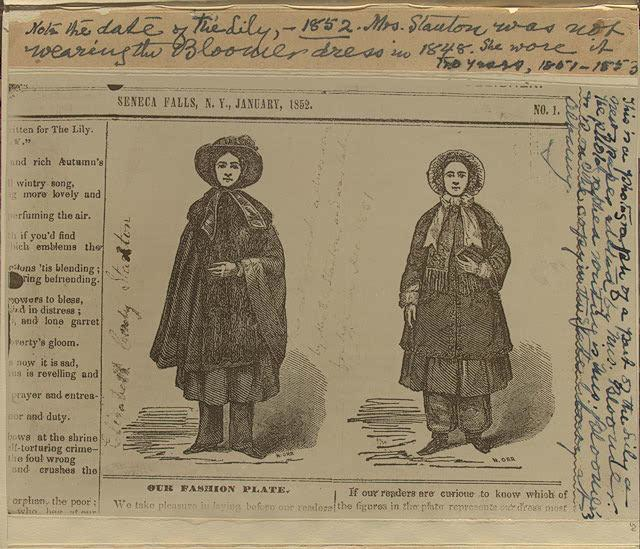
“The most elementary motive behind the
women’s rights movement of the mid-
1800’s was an effort to disrupt
traditional patriarchy. The desire to wear
trousers was most certainly couched in a
bitter war against male authority in both
society and church.” (see http://oldlandmark.wordpress.com/2006/04/)
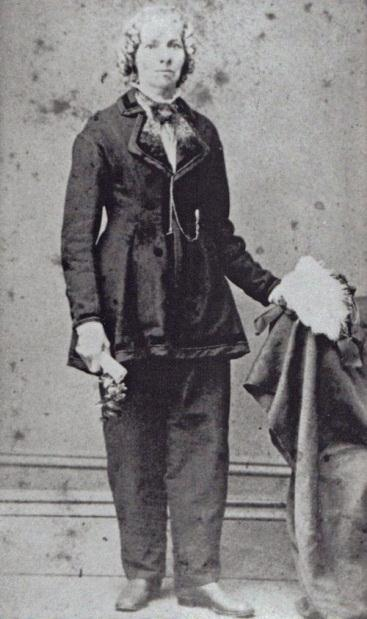
Their spiritualistic beliefs led them to
defy the Word of God.
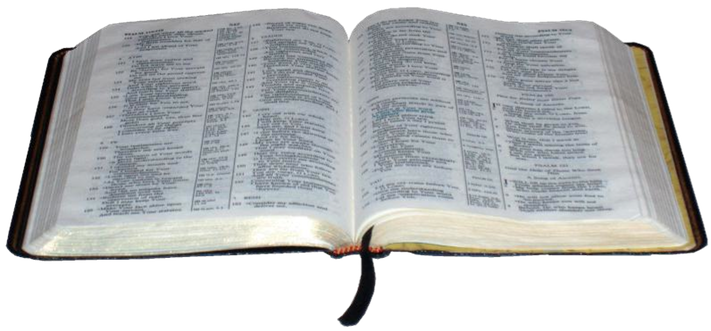 The Bible says:
The Bible says:
Deuteronomy 22:5: "The woman shall not wear
that which pertaineth unto a man, neither shall
a man put on a woman's garment: for all that do
so are abomination unto the Lord thy God."

Amelia Bloomer, in an angry response to a
sermon referring to Deuteronomy 22:5, stated:
“It matters not to us what Moses had to say to
the men and women of his time about what
they should wear . . .”
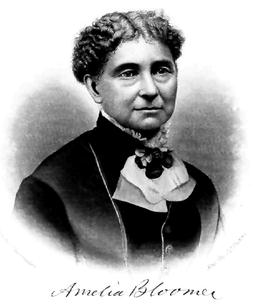
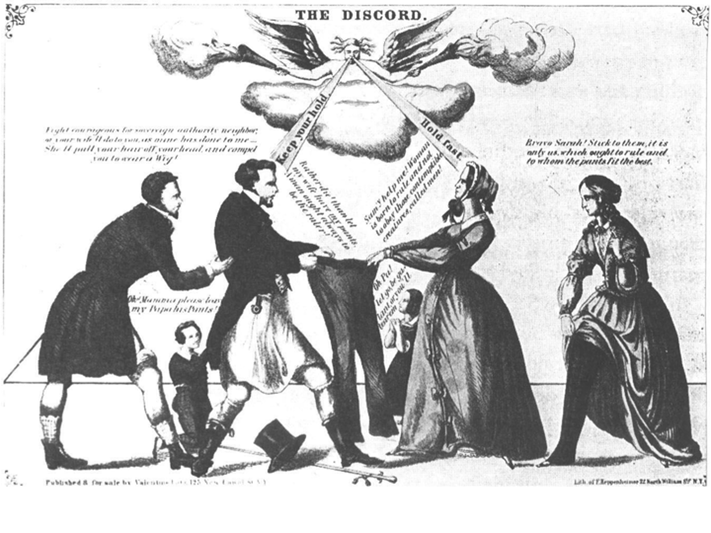 This 1855 cartoon depicts the power struggle over pants
This 1855 cartoon depicts the power struggle over pants
What are these women saying?
“Woman is born to rule, and not to obey those
contemptible creatures called men.”
“It is only us which ought to rule, and to whom
the pants fit the best!”
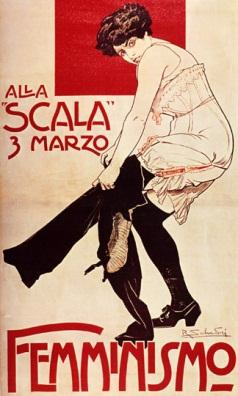
Pants are the symbol of male authority.
http://kentbrandenburg.blogspot.com/2011/10/god-expects-or-assumes-separate-visible.html

“Mrs. Bloomer turned the trousers into a
UNIFORM OF REBELLION…
CHALLENGING the long TRADITION
of who in the family wore the PANTS.” —
taken from
"Panati's Extraordinary Origins of Everyday Things" by Charles Panati
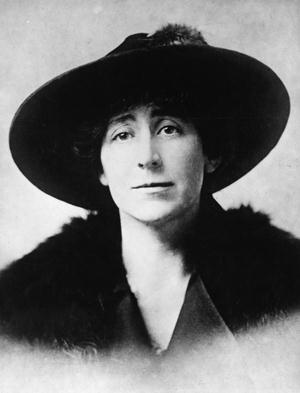
Elizabeth Cady Stanton was a women's rights
leader, spiritualist and advocate of the
American Costume. She spoke and wrote
strongly against the biblical headship of men.
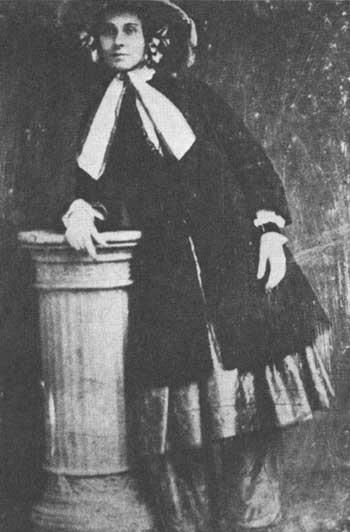
Mrs. Stanton wrote, "When women understand that
governments and religions are human inventions; that
bibles, prayer-books, catechisms, and encyclical letters
are all emanations from the brains of man, they will no
longer be oppressed by the injunctions that come to
them with the divine authority of 'Thus sayeth the
Lord.’ “
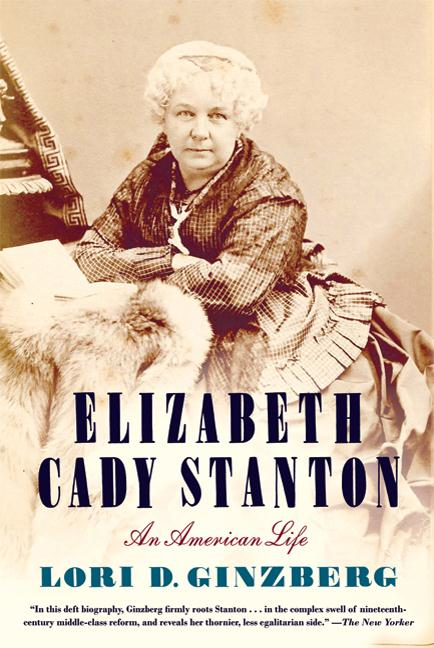
The Bible and the Church have
been the greatest stumbling
blocks in the way of women’s
emancipation.
-Elizabeth Cady Stanton-
e Bible and the Church have been the greatest stumbling blocks in the way oThe promoters of the “American Costume”
considered the Bible and the Church as standing in the
way of their goals.
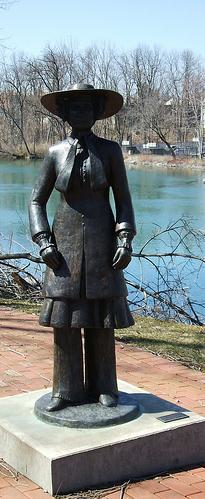
Notice the defiance, as Amelia Bloomer, a
spiritualist, declared: “We shall no longer be
answerable to the laws of God or man, no
longer be subject to punishment for breaking
them.”
Ellen White spoke out against the “American
Costume" as well as the rebellious spirit of the
women's rights advocates.
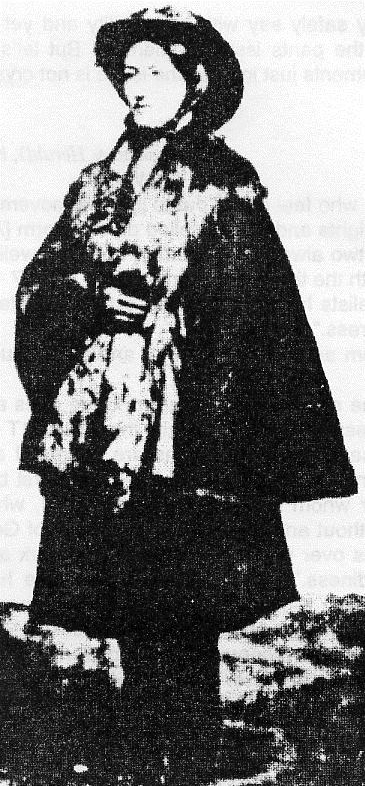
Their attitude was totally incompatible with Seventh- day Adventist beliefs.
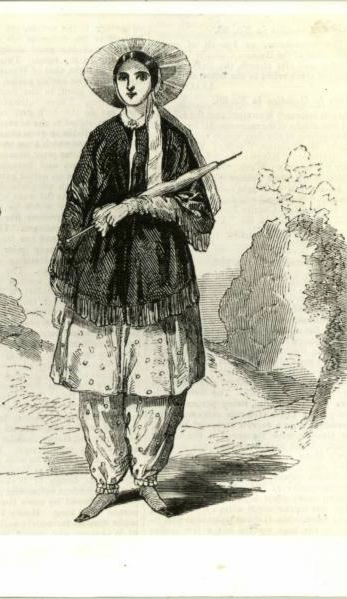
EGW: "Those who feel called out to join the
movement in favor of woman's rights and the
so-called dress reform [American costume]
might as well sever all connection with the
third angel's message." {1T 457.3}
This is the only quotation by Ellen G. White where she
makes a judgment regarding the women’s rights
movement. Clearly, she speaks most strongly against it.
And she adds the element of the gender blurring outfit.
These two issues are forever linked:
Joining the Women’s Rights Movement
Accepting clothing that blurred the male/female
distinction.
Both of these activities are contrary to the principles of Seventh-day Adventism.
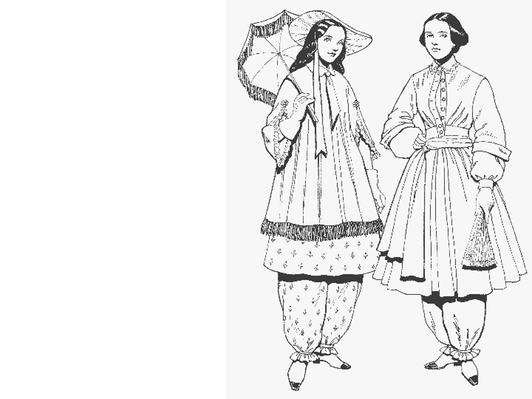
The message was clear that this style of dress
(the American Costume or Bloomer Costume)
was not approved by the Lord. Ellen White also
called it “the so-called reform dress.”
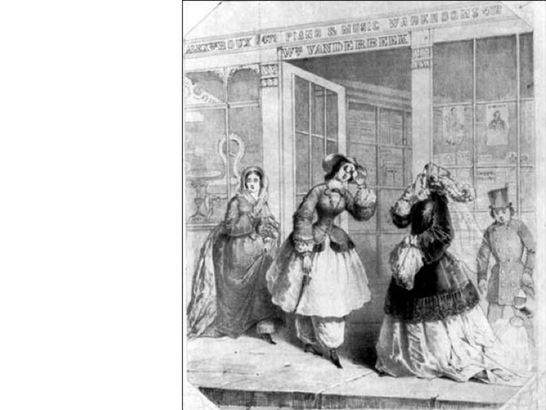
EGW: "The spirit which attends the one [women’s
rights movement] cannot be in harmony with the
other [Seventh-day Adventism]. "{1T 457.3}
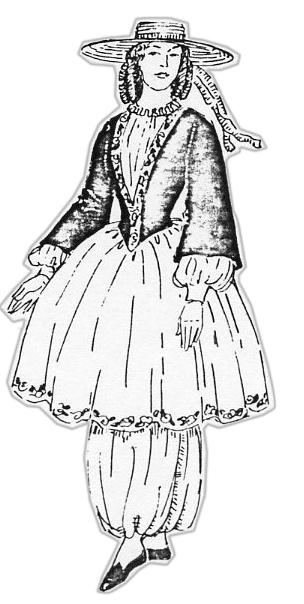
EGW: "God would not have His people adopt the
so-called reform dress [American Costume]. It
is immodest apparel, wholly unfitted for the
modest, humble followers of Christ."{1T 457.1}
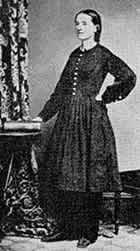
EGW: "The Scriptures are plain upon the
relations and rights of men and women.
Spiritualists have, to quite an extent,
adopted this singular mode of dress
[American Costume]."{1T 457.3}
Let’s find out what was so wrong about the American Costume.
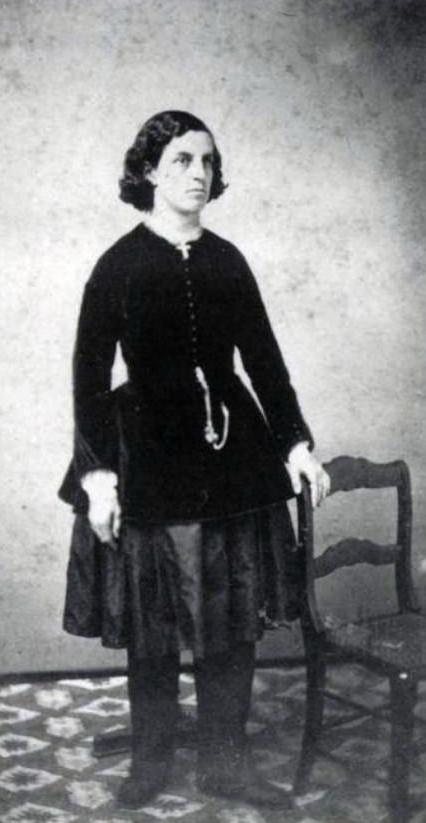
At its worst, the American Costume was too
masculine. This prompted Ellen White to write:
"There is an increasing tendency to have
women in their dress and appearance as near
like the other sex as possible and to fashion
their dress very much like that of men, but God
pronounces it abomination." {CG 427.2}

She stated that this style disregarded God's special
directions to have a "plain distinction between the
dress of men and women.”
As we will see, the plain distinction between men and women was that men wore pants and women wore dresses. When more than a few inches of pants were showing, the pants became a focal point of the outfit, which blurred the distinction between men’s and women’s clothing.
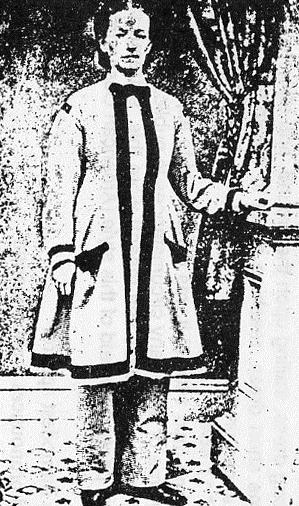
Thus, the American Costume was masculine, not
only in the style of the dress, but because of the
amount of the pant leg that was revealed.
The short dress [American Costume] that came
about to the knee and above the knee was declared
to be immodest by Ellen White.
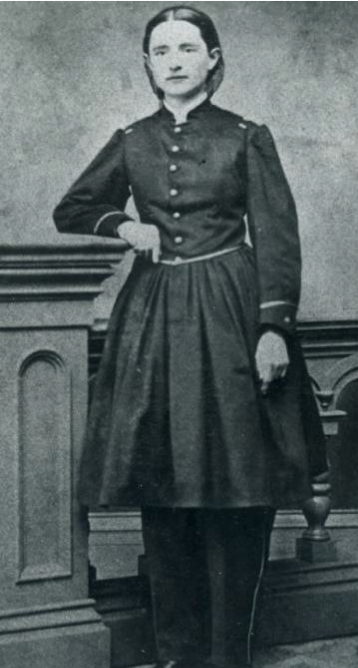
When the first rebellious ladies put on the
"short" dress over their bloomers, the dresses
came approximately to the knee.
Within a short while, the dresses got shorter,
until finally some were about half way from the
hips to the knee. Most of the pictures we have
show the knee length dress.
This is Dr. Lydia Sayer Hasbrouck,
lecturer, and editor of The Sibyl: the official newsletter
of the National Dress Reform Association (NDRA)

She dedicated her life to women’s rights:
“I registered a vow that I would stand or fall in
the battle for women’s physical, political and
educational freedom and equality.”
James & Ellen White first visited “Our Home” in 1863,
which was a secular health sanitarium.
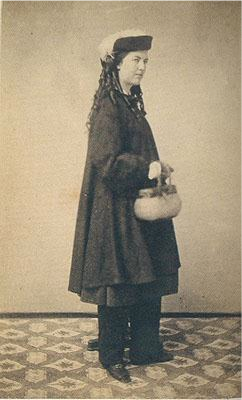
EGW: "This is the style and influence of the
"American Costume,” taught and worn by
many at "Our Home,” Dansville N. Y.”
{RH, October 8, 1867 par. 7}
We will show various styles of the American Costume.
EGW: "They have all styles of dress here. (Our
Home-Danville) Some are very becoming, if
not so short. We shall get patterns from this
place and I think we can get out a style of dress
more healthful than we now wear and yet not
be bloomer or the American costume.” {1T 457.2}
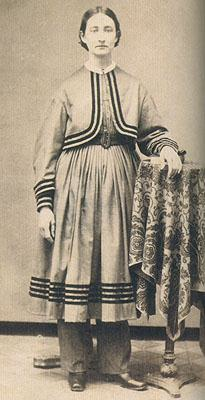
One of the problems with the American Costume was that it was too short. This made it look masculine.
EGW: "There is an increasing tendency to have
women in their dress and appearance as near
like the other sex as possible, and to fashion
their dress very much like that of men, but God
pronounces it abomination. . . . . The foregoing
was given me as a reproof to those who are
inclined to adopt a style of dress resembling
that worn by men;” {1T 457.2}
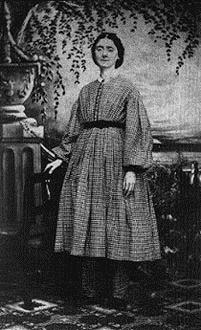
EGW: “There is still another style of dress which
is adopted by a class of so-called dress
reformers [American Costume]. They imitate
the opposite sex as nearly as possible. They
wear the cap, pants, vest, coat, and boots, the
last of which is the most sensible part of the
costume.” {1T 459.7}
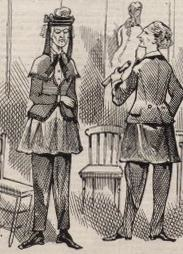
The reason we are so carefully reviewing this
history of the American Costume and Ellen G.
White’s comments regarding it, is because it
provides us with a very clear interpretation of
Deuteronomy 22:5.
"The woman shall not wear that which pertaineth unto a man, neither shall a man put
on a woman's garment: for all that do so are abomination unto the Lord thy God."
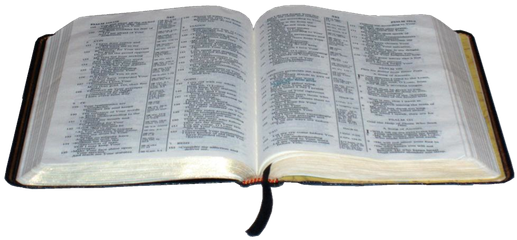
We don’t have to wonder what God means in
this verse. God’s prophetess clearly tells us that
women who wear clothing similar to men’s
clothing are an abomination to Him.
That is extremely helpful to all who are seeking
God’s will in their dress.
EGW: "I saw that God's order has been reversed,
and His special directions disregarded, by those
who adopt the American costume. I was
referred to Deuteronomy 22:5: "The woman
shall not wear that which pertaineth unto a
man, neither shall a man put on a woman’s
garment: for all that do so are abomination unto
the Lord thy God.'" {1T 457.1}
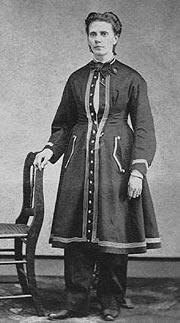
Dr. Harriet N. Austin was a physician at “Our
Home” in Danville. Here she is wearing her
own design of the American Costume with
straight trouser legs.
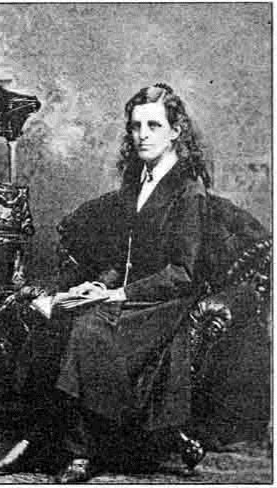
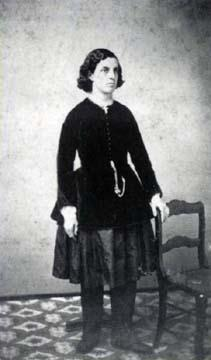
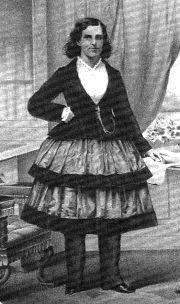
The pants were revealed from the knee down.
Ellen White declared that this outfit was too
close to men’s wear.
EGW: "We shall never imitate Miss Dr. Austin or
Mrs. Dr. York. They dress very much like men." {5MR 380.4}
Dr. Mary Walker started out wearing the
regular American Costume, but became
increasingly masculine in her attire.
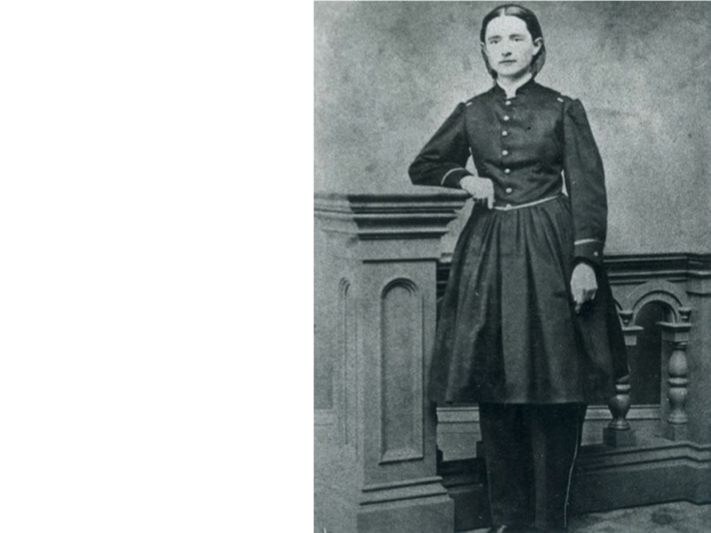
Dr. Mary Walker was proud that she was
arrested several times for ‘impersonating a man’
- she had taken to fully wearing men's clothing,
from the top hat, wing collar and bow tie to the
pants and shoes.
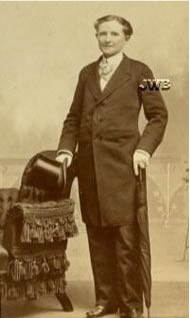
Mary Tillotson was a spiritualist, and charter
member of the National Dress Reform
Association; 1866-1870.
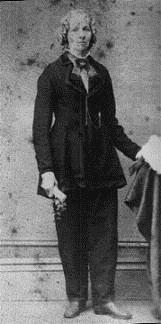
She first adopted a knee length short dress
[American Costume] in 1842, then shortened it
12 inches.
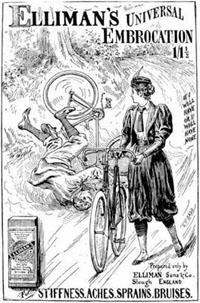
The American Costume was popular in the
1850’s and early 1860’s but lost popularity by
the 1870’s. In the 1890’s the bicycle craze
again brought back pants-like outfits into the
wardrobes of some American women.
What we wear affects our demeanor.
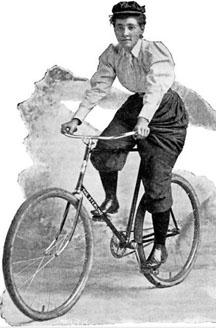
EGW: “Satan is leading them on to be a proverb
in the mouth of unbelievers because of their
boldness, their lack of reserve and womanly
modesty.”{AH 52.2}
EGW: "With the so- called dress reform there
goes a spirit of levity and boldness just in
keeping with the dress. Modesty and reserve
seem to depart from many as they adopt that
style of dress." {1T 457.4}
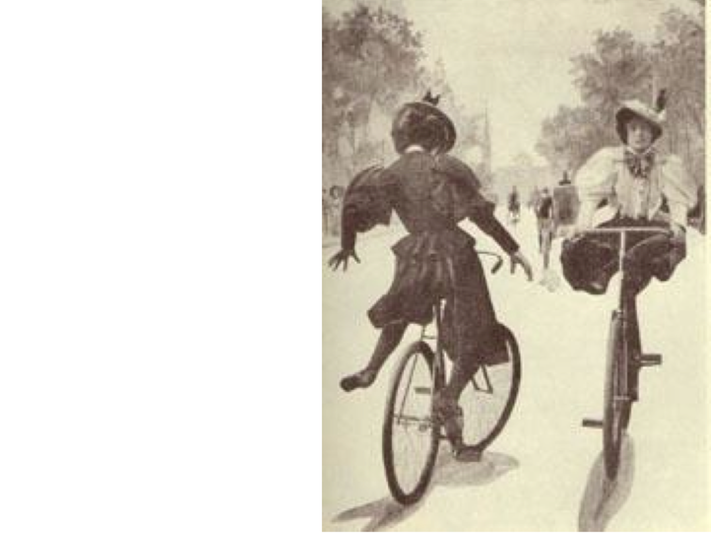
The Seventh-day Adventist
Reform Dress was promoted
by Ellen G. White from 1865
until 1881

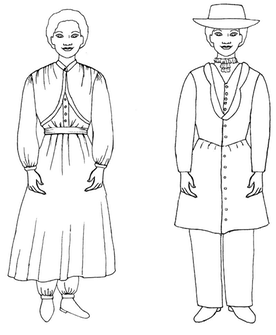
![]()
As we look at the Seventh-day Adventist
Reform Dress, advocated and worn by Ellen G.
White, we will see clearly that this dress is
designed to be feminine in style, with a longer
length than the American Costume.
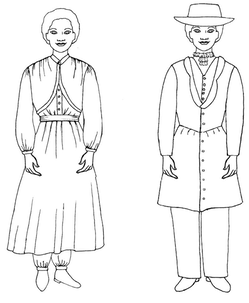
EGW: "In wide contrast with this modest dress
[the Seventh-day Adventist reform dress] is the
so-called American costume, resembling very
nearly the dress worn by men. It consists of a
vest, pants, and a dress resembling a coat and
reaching about halfway from the hip to the
knee. This dress I have opposed, from what has
been shown me as in harmony with the word of
God; while the other I have recommended as
modest, comfortable, convenient, and
healthful." {1T 465.1}
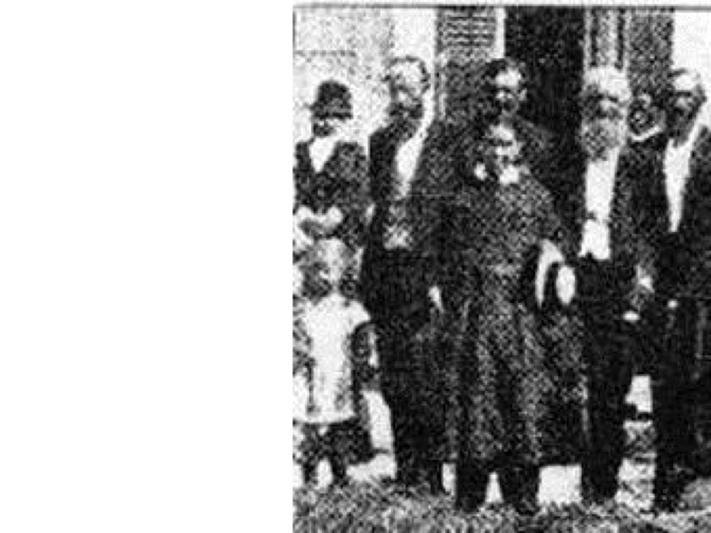
Ellen G. White in God's
version of the Reform Dress
Very little of the pants-like undergarment was
visible, so that the dress was the main feature,
not the pants. It's advantage over the prevailing
fashion of the very long dress is that it didn’t
drag in the dirt, it was looser at the waist,
hanging from the shoulders, and it was plain. It
was definitely more healthful.
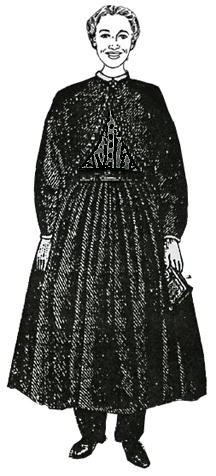
Thus, it was in full harmony with the 4 basic principles of dress reform that Ellen White advocated:
- Modesty
- Simplicity
- Gender distinction
- Healthfulness
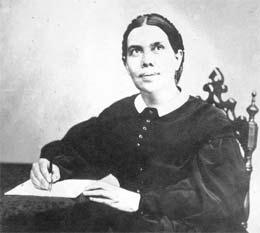
In 1865, Ellen White wrote:
"God would now have His people adopt the
reform dress [SDA Reform Dress], not only
to distinguish them from the world as His
"peculiar people," but because a reform in
dress is essential to physical and mental
health." {1T 524.2}
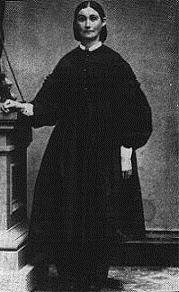
EGW: "The Lord has let light shine, and in His
providence a style of dress modest, healthful,
and convenient [SDA Reform Dress], has been
proposed and adopted by those who were
conscientious to follow the light.”
Testimony to the Church at Battle Creek - 1872, p. 61
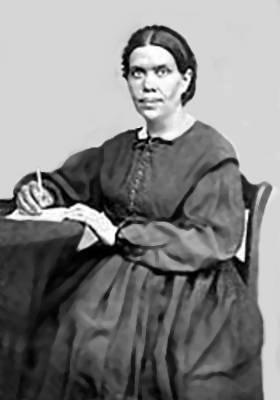
EGW: "While none were compelled to
adopt the [SDA] reform dress, our
people could and should have
appreciated its advantages and accepted
it as a blessing." {4T 638.5}
The length of the "American Costume”
dress compared with Ellen White's SDA
Reform Dress
EGW: "My views were calculated to
correct the present fashion, the extreme
long dress, trailing upon the ground, and
also to correct the extreme short dress
[American Costume], reaching about to the
knees, [about 20-24 inches above the floor]
which is worn by a certain class. I was
shown that we should shun both extremes.”
{1T 464.1}
The extremes we are to shun are:
• Dragging dresses that sweep the ground
• Short, knee length dresses
EGW: “By wearing the dress reaching
about to the top of a woman's gaiter boot
[about 9 inches from the floor] we shall
escape the evils of the extreme long
dress, and shall also shun the evils and
notoriety of the extreme short dress
[American Costume]." {1T 464.1}
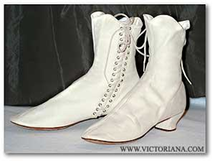
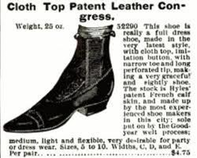
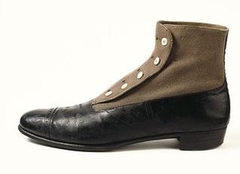
Gaiter Boots
The Reform Dress Had an Approved Pattern
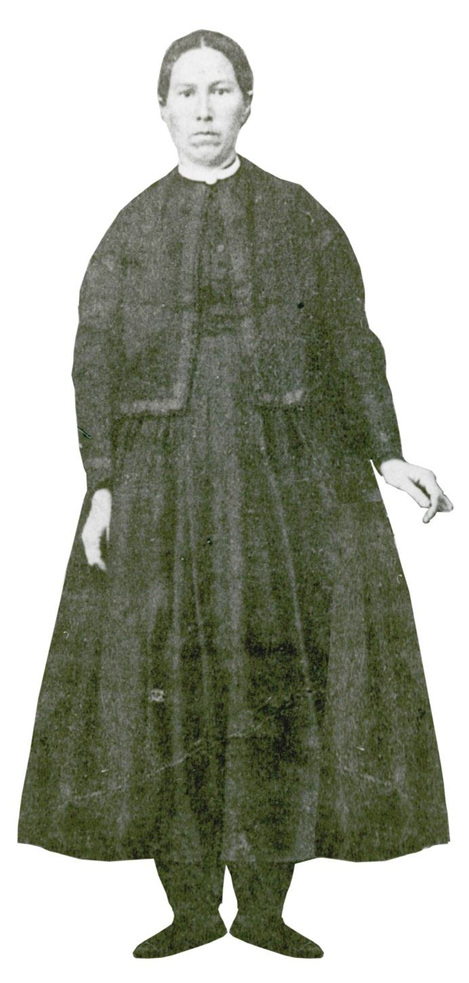
EGW: "Before putting on the [SDA]
reform dress, our sisters should obtain
patterns of the pants and sack worn with
it." {1T 521}
In 1867, Ellen White wrote:
"I put on the [SDA] reformed dress September,
1865, when I visited Dansville with my sick
husband. It was the same length I now wear,
and I was distinctly given to understand that it
was not the "American Costume." I have worn
this style of dress ever since that time,
excepting at meetings, in the crowded streets of
villages and cities, and when visiting distant
relatives. Since I commenced to write No. 11,
in January, 1867, I have worn no other
than the reformed dress." {RH, October 8, 1867 par. 13}
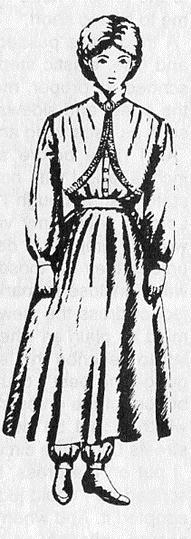
EGW: “I put on the dress [SDA Reform Dress],
in length as near as I had seen and described as
I could judge. My sisters in Northern Michigan
also adopted it.”{RH, October 8, 1867 par. 10}
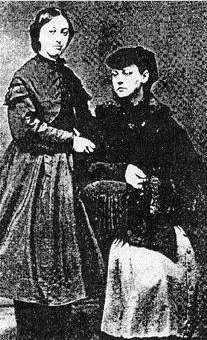
• A vision given to Ellen White in 1867,
confirmed God's approval of the SDA Reform
Dress.
EGW: "But three companies of females passed before me, with their dresses as follows with respect to length:" {3SM 277.5}
Wrong Wrong Right
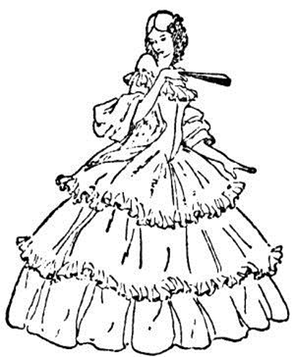
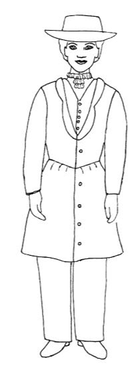
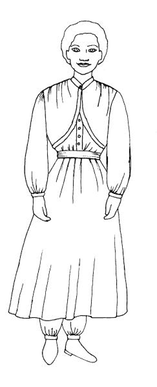
Long, dragging Above Knee length Few inches from floor
EGW: "The first were of fashionable length,
burdening the limbs, impeding the step,
sweeping the street and gathering its filth; the
evil results of which I have fully stated. This
class, who were slaves to fashion, appeared
feeble and languid.” {3SM 278.1}
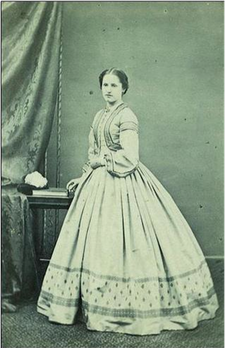
EGW: "The dress of the second class which
passed before me was in many respects as it
should be. The limbs were well clad. They were
free from the burdens which the tyrant Fashion
had imposed upon the first class; but had gone
to that extreme in the short dress [American
Costume] as to disgust and prejudice good
people, and destroy in a great measure their
own influence.” {3SM 278.2}
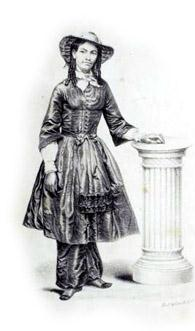
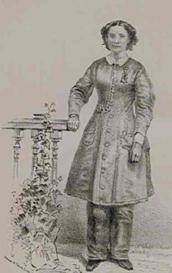
EGW: “This is the style and influence of the
'American Costume,' taught and worn by many
at Our Home, Dansville, New York. It does not
reach to the knee. I need not say that this style
of dress was shown me to be too short.”
{3SM 278.2}
EGW: "A third class passed before me with
cheerful countenances, and free, elastic step.
Their dress was the length I have described as
proper, modest and healthful. It cleared the filth
of the street and sidewalk a few inches under
all circumstances, such as ascending and
descending steps, etc."{3SM 278.3} -- Review and Herald, October 8, 1867.
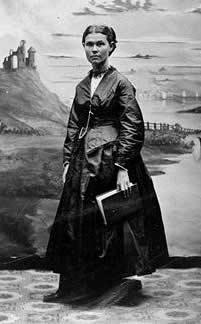
God showed Ellen White that we should not
wear dragging dresses that sweep the ground.
That is too long.
We also should not wear approximately knee
length dresses. That is too short.
While we cannot know exactly what Ellen
White saw in this vision as the acceptable dress
to God, we do know that it cleared the ground
by a few inches.
The SDA reform dress pattern that was
developed averaged 9 inches from the floor.
See {RH, October 8, 1867 par. 10}
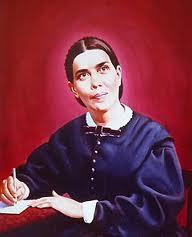
The SDA Reform Dress Was Laid Aside in
1881
While the approved SDA Reform Dress
received some acceptance from the Seventh-
day Adventist sisters, it was not widespread,
and serious difficulties developed.
Around 1868 Ellen White said, "As I travel
from place to place I find that the [SDA]
reform dress is not rightly represented….”
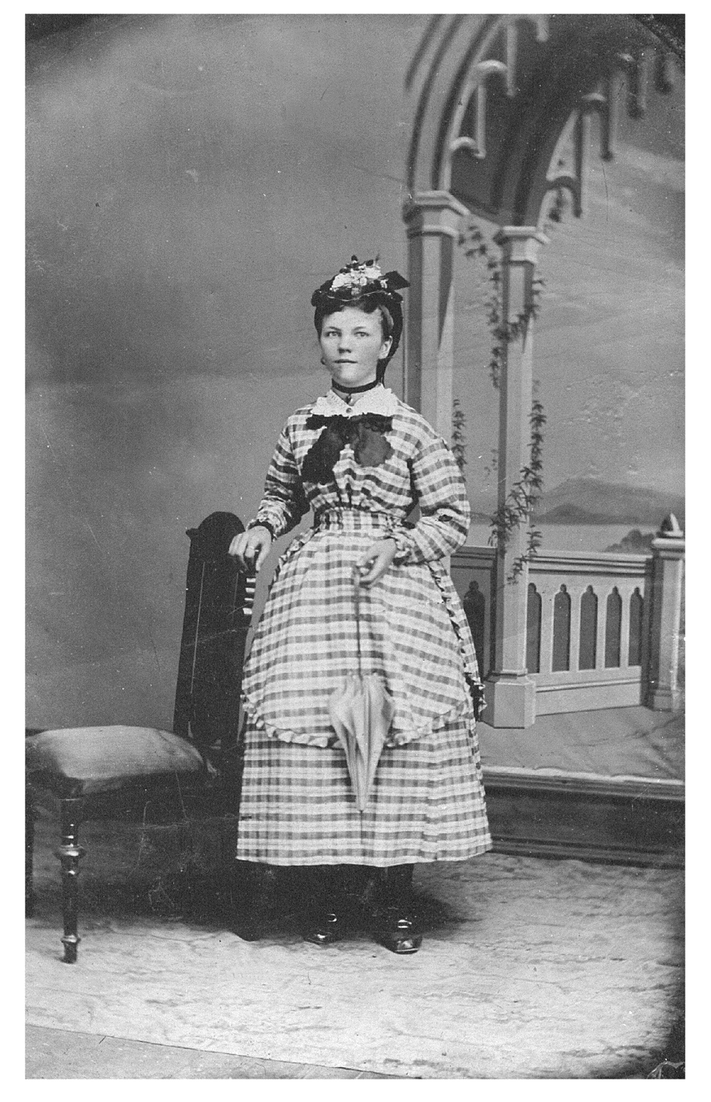 For example, the length on this
dress is close to the acceptable
length, but the pattern is not
according to the SDA reform dress.
For example, the length on this
dress is close to the acceptable
length, but the pattern is not
according to the SDA reform dress.
Lack of uniformity, wrong attitudes--both by
those who adopted it and those who resisted
it--caused many problems.
Therefore, in 1881, the SDA Reform Dress
was no longer advocated.
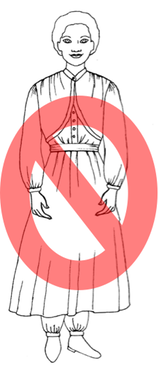
EGW: "The [SDA] reform dress, which was once
advocated, proved a battle at every step.”
{SpM 91.1, 1885}
• The battle was caused by the rebellious hearts of the sisters.
• Therefore, our sisters were not encouraged to adopt this style of dress after 1881.
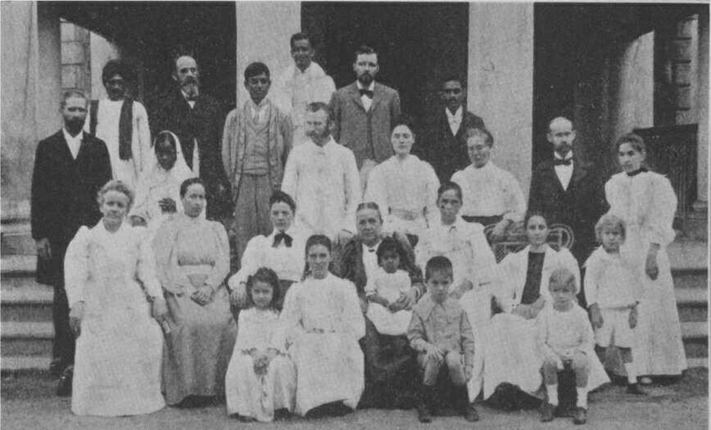
EGW: "The Lord has not moved upon any of our
sisters [after 1881] to adopt the [SDA] reform
dress. The difficulties that we once had to meet
are not to be brought in again. There was so
much resistance among our own people that it
was removed from them. It would then have
proved a blessing." {5MR 405.1} 1885
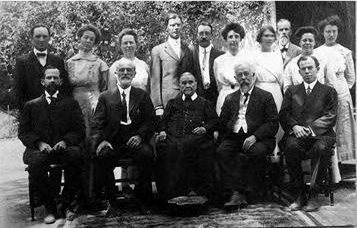
Because of the rebellion against God’s dress
reform, which, at 9 inches above the floor, was
called “the short dress,” EGW counseled:
"...do not again introduce the short dress and
pants [SDA Reform Dress] unless you have the
Word of the Lord for it." {SpM 92.2} 1895
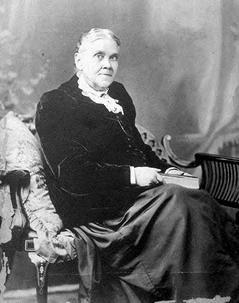
Sixteen years later, she wrote:
EGW: "The Lord has not indicated that it is the
duty of our sisters to go back to the [SDA]
reform dress." {1MR 33.2} 1897
• A Less Objectionable Style of Dress
was Advocated in 1881
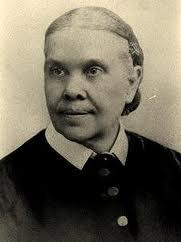
EGW: “As our sisters would not generally accept
the [SDA] Reform Dress as it should be worn,
another, less objectionable style is now
presented. It is free from needless trimmings,
free from the looped-up, tied back overskirts. It
consists of a plain sack or loose-fitting basque,
[bodice] and skirt, the latter short enough to
avoid the mud and filth of the streets.” {4T 640.1}
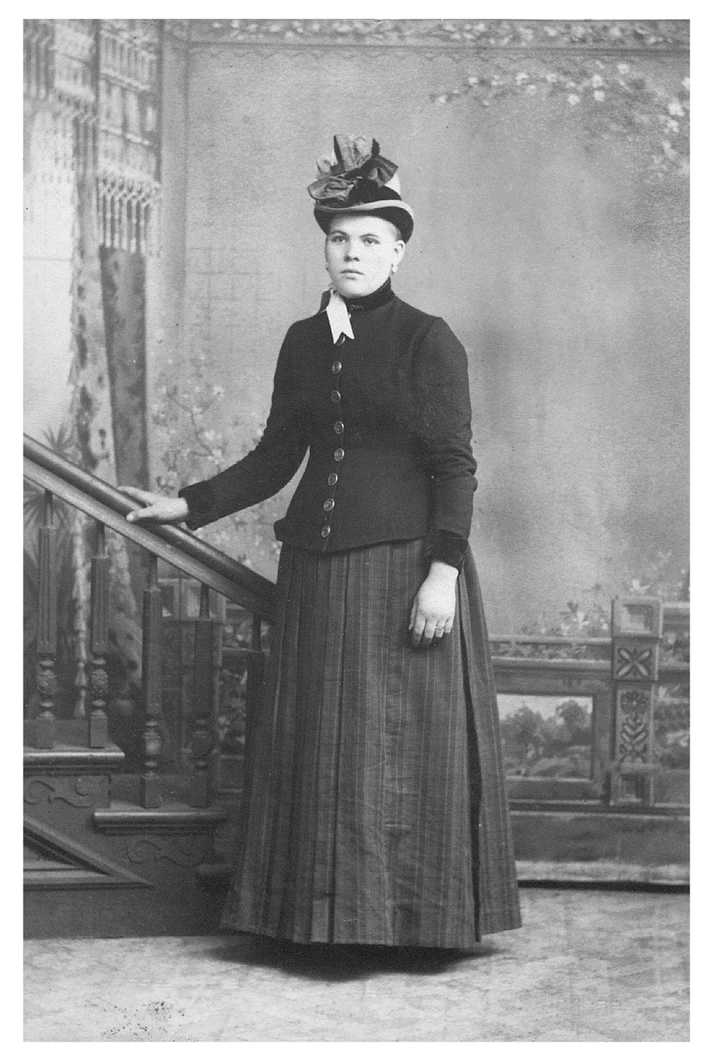
EGW: “The material should be free from large
plaids and figures, and plain in color. The
same attention should be given to the
clothing of the limbs as with the short dress
[SDA Reform Dress].” {4T 640.1}
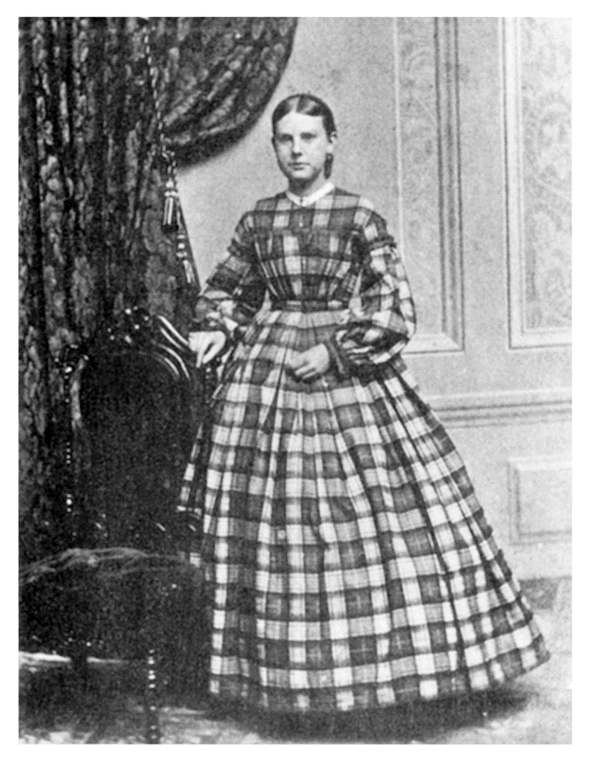
(This health principle of covering the limbs should not be ignored!)
The style of dress now advocated by God’s prophetess is as follows:
- It was to be a simple, unadorned dress of modest length.
- But there was no specific pattern or style to
follow.
• It was to be longer than the SDA Reform Dress,
reaching closer to the ankle.
• The limbs were to be covered.
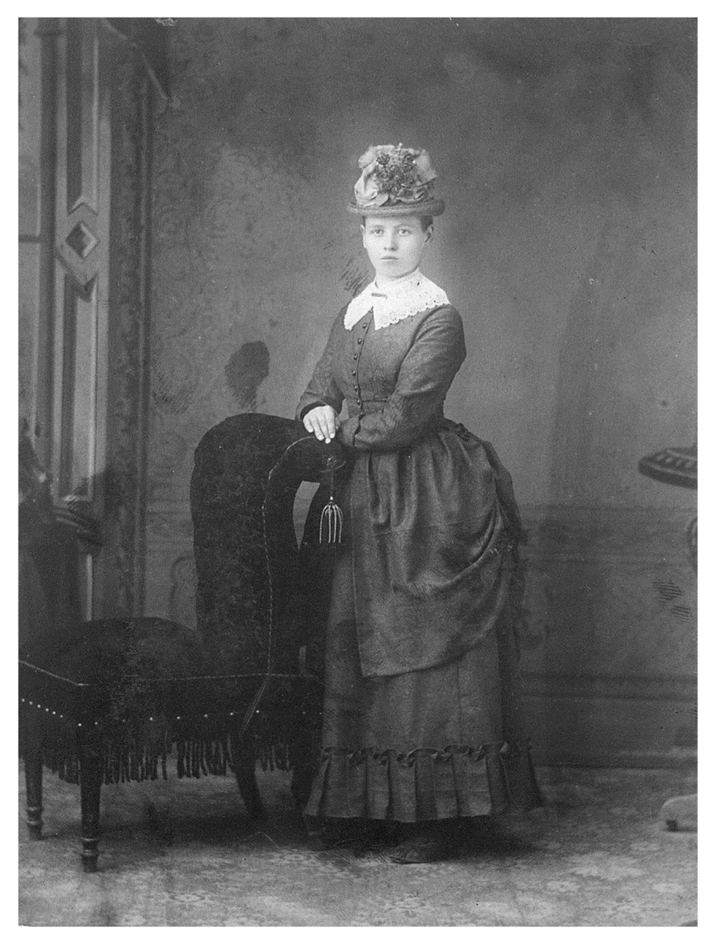
EGW: “The dress of our people should be made
most simple. The skirt and sacque or sac
[a modest bodice that covers the upper part of a
woman's body, feminine jacket] I have mentioned,
may be used,-- not just that pattern and nothing
else should be established; but a simple style, as
was represented in that dress.” {1MR 33.1}
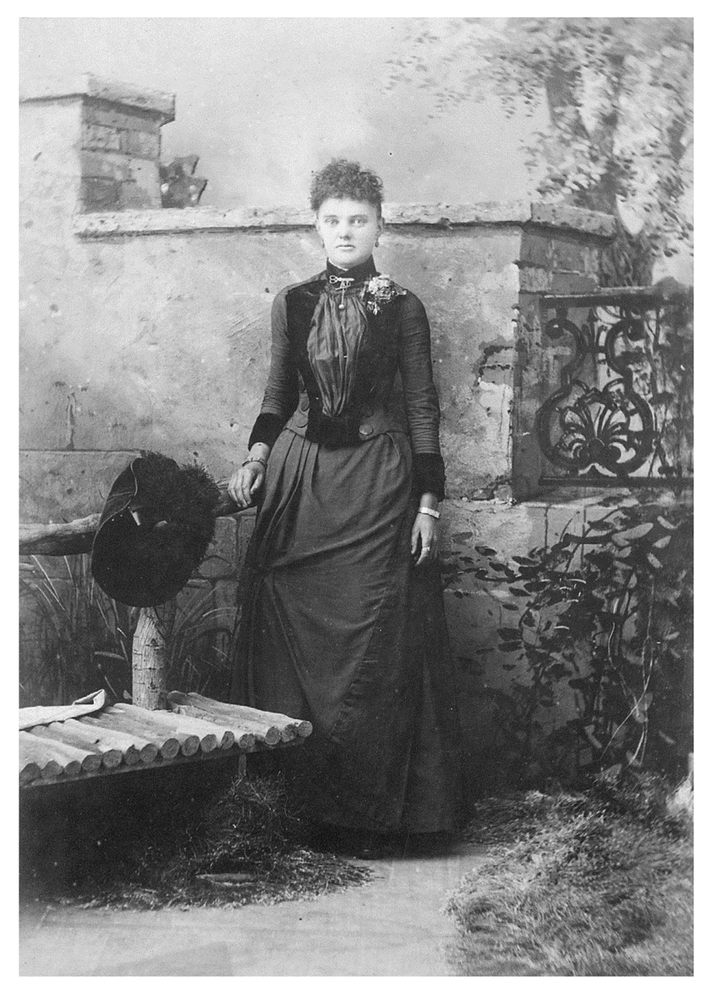
EGW: “Some have supposed that the very pattern
given was the pattern that all were to adopt.
This is not so. But something as simple as this
would be the best we could adopt under the
circumstances. No one precise style has been
given me as the exact rule to guide all in their
dress. . . .The Lord has not indicated that it is
the duty of our sisters to go back to the [SDA]
reform dress. Simple dresses should be worn.
Try your talent, my sisters, in this essential
reform.” Letter 19, 1897, pp 2, 3. (To Brother J. H. Haughey,
July 4, 1897.) {1MR 33.2} {HL 119.1} {3SM 254.3}
Lessons From the Past
God guided Ellen White to call for a dress
reform, that corrected the errors of the
prevailing fashion, but also guarded against the
extreme fashion of the American Costume. The
Seventh-day Adventist reform dress was laid
aside because of the lack of acceptance and
uniformity among the Seventh-day Adventist
sisters. We can learn from this experience what
is acceptable to God, and what is not acceptable
to Him.
By the early 1890’s, the prevailing fashion was
coming more into line with God's principles on
dress-- modesty, femininity, and healthfulness.
It was a "more sensible style of dress." It didn’t
drag on the ground, it didn't require corsets, and
it wasn't so heavy, but hung from the shoulders.
Extravagance was still an issue, but God’s
daughters were counseled to leave off the extra
trimmings, and dress with simplicity.
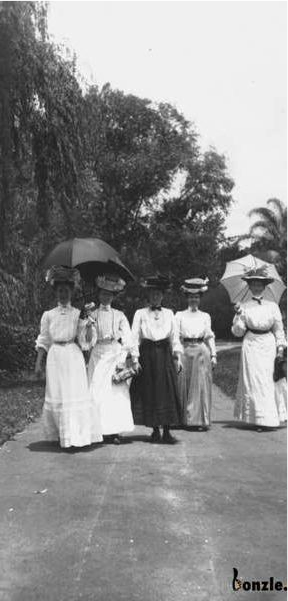
EGW: "But the more sensible style of dress now
being adopted does not embrace the
objectionable features. The fashionable part
may be discarded, and should be by all who
will read the Word of God." {SpM 91. 1}
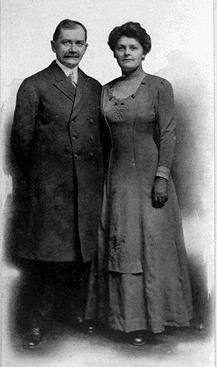
We can understand why Ellen White made the
following statement when we consider how
some of the prevailing fashions actually
provided a style of dress that could be worn
while still upholding God's standards.
EGW: "If the world introduce a modest,
convenient, and healthful mode of dress, which
is in accordance with the Bible, it will not
change our relation to God or to the world to
adopt such a style of dress." {CG 414.3}
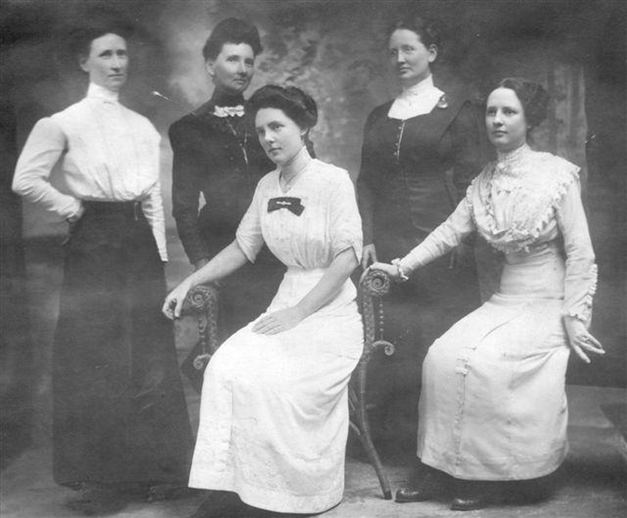
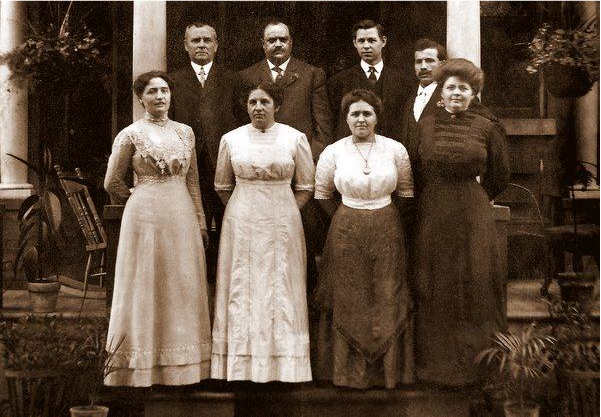
We can learn from the experiences of the past
that, regardless of the prevailing fashions, God
wants His daughters to dress modestly,
femininely, simply and healthfully. We need to
reject those areas that are not in compliance,
making sure we uphold God's principles.
In our next presentation, we will be
considering how the fashions have
developed from the 1870’s to our present
time.
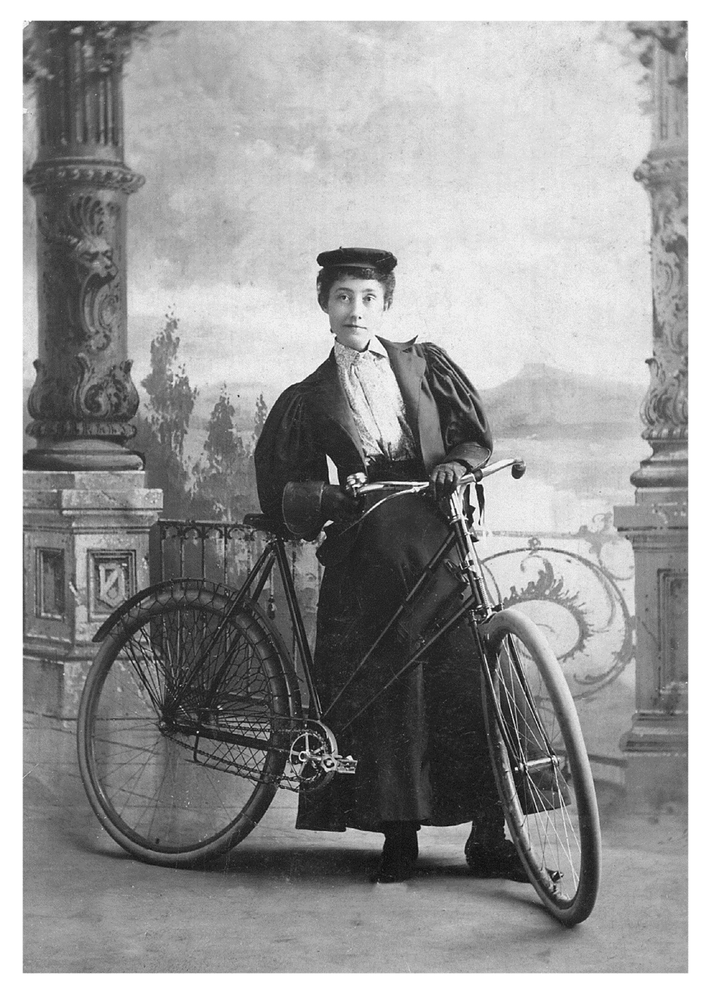
End of Part 3
Part 4 will take us from 1870 to today,
showing the progression of fashion,
and how it has influenced our current
thinking.